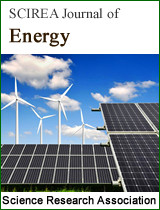Experimental Study of Polymer Injection Performance on Oil Recovery Factor Enhancement in Homogeneous and Heterogeneous Porous Media Using Acrylic Micromodel
DOI: 10.54647/energy48138 75 Downloads 44220 Views
Author(s)
Abstract
Understanding polymer flow behaviour in porous media is essential to know the performance of polymer injection on oil recovery factor enhancement that is affected by various parameters. This research work conducted a series of waterflooding and polymer injection processes on acrylic or polymethyl methacrylate (PMMA) micromodel with homogeneous and heterogeneous flow patterns. In this study, we used the dry etching method to fabricate the micromodel. The waterflooding process is conducted first and then followed by polymer injection with different concentrations in each micromodel. The incremental oil recovery factor resulting from polymer injection can be determined and analysed to know the effect of polymer concentration and reservoir heterogeneity on the incremental oil recovery factor. In a particular scenario, the test is conducted with different injection flow rates to understand the effect of flow rate on the oil recovery. The micromodel flooding test result is further analysed by using Digital Image Analysis (DIA). The results revealed that the highest incremental oil recovery factor is obtained when the layers are perpendicular to the mean flow direction if the polymer solution is injected from a low permeable zone. In addition, the increase of polymer concentration will result in higher incremental oil recovery and a lower injection flow rate will give better sweep efficiency. This study shows the application of micromodel for the understanding of enhanced oil recovery techniques at pore scale.
Keywords
Micromodel, Polymer Injection, Incremental Oil Recovery Factor, Digital Image Analysis.
Cite this paper
Boni Swadesi, Dedy Kristanto, Indah Widyaningsih, Sri Wahyuni Murni, Sinosa Husenido, Mahruri Sanmurjana, Roiduz Zumar, Septoratno Siregar,
Experimental Study of Polymer Injection Performance on Oil Recovery Factor Enhancement in Homogeneous and Heterogeneous Porous Media Using Acrylic Micromodel
, SCIREA Journal of Energy.
Volume 6, Issue 5, October 2021 | PP. 69-94.
10.54647/energy48138
References
| [ 1 ] | Craig, F. F. (1971) The reservoir engineering aspects of waterflooding. New York: H.L. Doherty Memorial Fund of AIME. |
| [ 2 ] | Sheng JJ, Leonhardt B, and Azri N (2015) Status of polymer-flooding technology. J Can Pet Technol 54: Issue 02. |
| [ 3 ] | Painter, Paul C. and Coleman, Michael M. (1997) Fundamentals of polymer science: an introductory text. Lancaster, Pa.: Technomic Pub. Co. p. 1. ISBN 1-56676-559-5. |
| [ 4 ] | Sheng, J. J. (2011) Modern Chemical Enhanced Oil Recovery: Theory and Practice, first edition. Amsterdam: Elsevier. |
| [ 5 ] | Manrique, E.J., Muci, V.E., and Gurfinkel, M.E. (2007) EOR field experiences in carbonate reservoirs in the United States. SPEREE (December), 667–686. |
| [ 6 ] | Sorbie KS (1991) Polymer-improved oil recovery, 1st ed. CRC Press, Inc, Boca Raton. |
| [ 7 ] | Needham RB and Doe PH (1987) Polymer flooding review. J Pet Technol. |
| [ 8 ] | D.A. Siginer and S.I. Bakhtiyarov (2001) Flow in Porous Media of Variable Permeability and Novel Effects, Journal of Applied Mechanics, Vol. 68, pp 312-319. |
| [ 9 ] | Chatenever, Alfred, and John C. Calhoun. (1952) Visual Examinations of Fluid Behaviour in Porous Media - Part I. J Pet Technol 4: 149–156. doi: https://doi.org/10.2118/135-G. |
| [ 10 ] | Mattax, C.C. and Kyte, J.R. (1961) Ever see a Water Flood. Oil and Gas J. 115-128. |
| [ 11 ] | Emami Meybodi H, Kharrat R, Ghazanfari MH (2008) Effect of heterogeneity of layered reservoirs on polymer flooding: an experimental approach using 5-spot glass micromodel. Europec/ EAGE conference and exhibition, 9–12 June 2008, Rome, Italy. |
| [ 12 ] | Herbas, J.G. G., Wegner, J., Hincapie, R.E. E., Födisch, H., Ganzer, L., Castillo, J.A. Del, and Herbert Magyezi Mugizi. (2015) Comprehensive Micromodel Study to Evaluate Polymer EOR in Unconsolidated Sand Reservoirs. Paper presented at the SPE Middle East Oil & Gas Show and Conference, Manama, Bahrain, March 2015. doi: https://doi.org/10.2118/172669-MS. |
| [ 13 ] | Sedaghat, M., Mohammadzadeh, O., Kord, S., and I. Chatzis. (2015) Pore-Level Experimental Investigation of ASP Flooding to Recover Heavy Oil in Fractured Five-Spot Micromodels." Paper presented at the EUROPEC 2015, Madrid, Spain, June 2015. doi: https://doi.org/10.2118/174290-MS. |
| [ 14 ] | Kenzhekhanov S (2017) Chemical EOR process visualisation using NOA81 micromodels. Colorado School of Mines, Golden. |
| [ 15 ] | Hosseini SJ and Foroozesh J (2018) Experimental Study of Polymer Injection Enhanced Oil Recovery in Homogeneous and Heterogeneous Porous Media Using Glass-Type Micromodels. Journal of Petroleum Exploration and Production Technology. https://doi.org/10.1007/s13202-018-0492-x. |
| [ 16 ] | Sugar, Antonia, Serag, Maged F., Torrealba, Victor A., Buttner, Ulrich, Habuchi, Satoshi, and Hussein Hoteit. (2020) Visualization of Polymer Retention Mechanisms in Porous Media Using Microfluidics. Paper presented at the SPE Europec, Virtual, December 2020. doi: https://doi.org/10.2118/200557-MS. |

